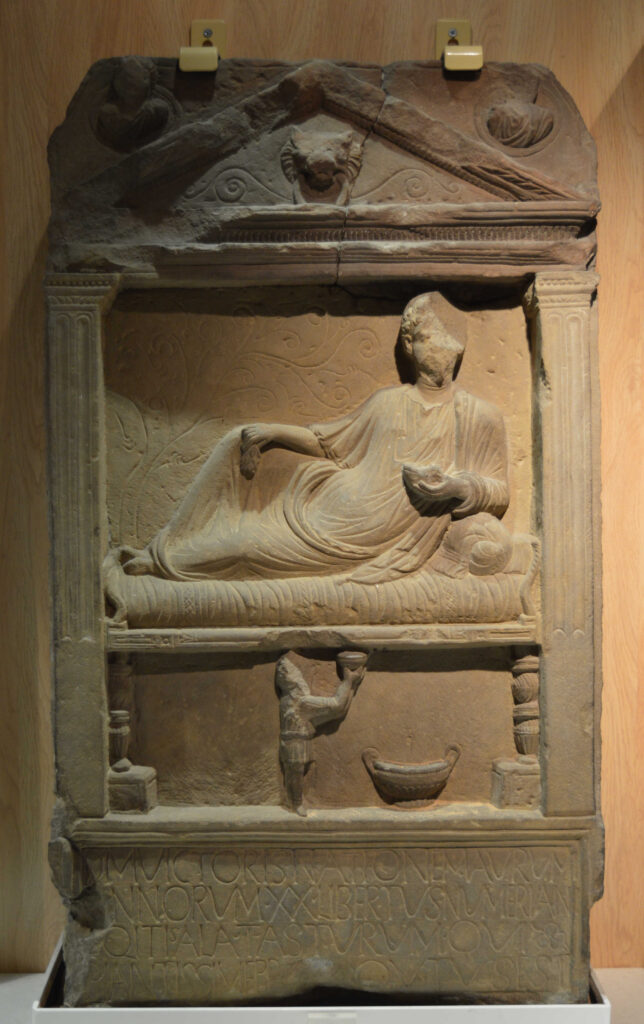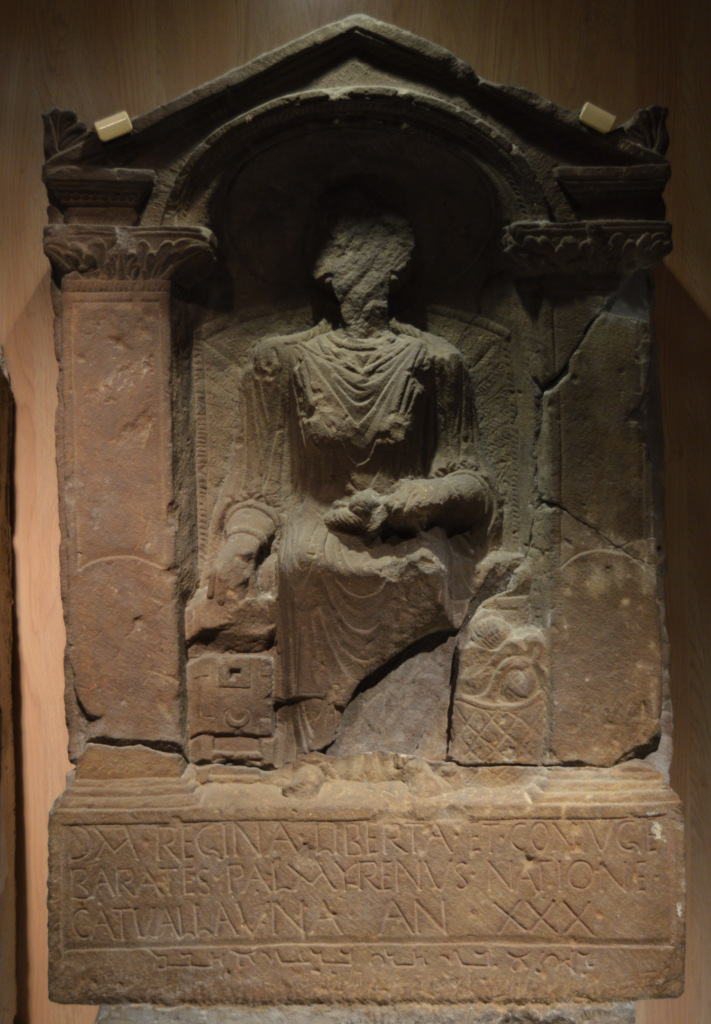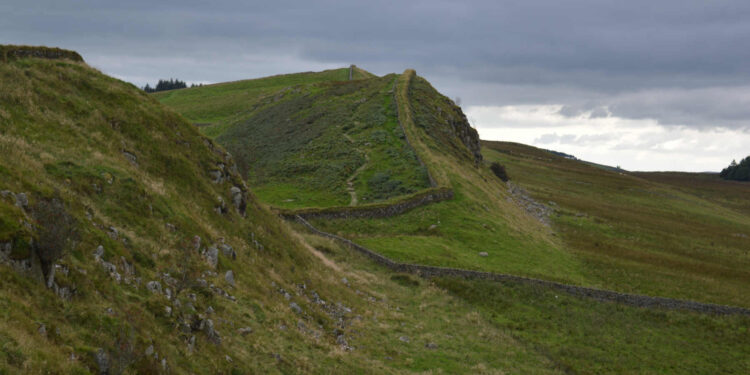English Heritage, the esteemed guardian body of our ancient monuments, has declared that Hadrian’s Wall, the most famous relic of the Roman occupation, is a gay icon and is “linked to England’s queer history”. So says the Mail.
The reason is that the Emperor Hadrian (117–38) enjoyed “several gay relationships”. Like most such tortuous woke revelations, Hadrian’s tastes are old news. It’s undoubtedly true that Hadrian bridged the joyless chasm of his loveless and childless marriage to his Empress Sabina in a disastrous infatuation with a youth called Antinous. Here’s what the only ancient biography of Hadrian says, written about two centuries later, referring to Hadrian’s “passion for males and the adulteries with married women to which he is said to have been addicted”.
But the big story was that:
During a journey on the Nile he lost Antinous, his favourite, and for this youth he wept like a woman. Concerning this incident there are varying rumours; for some claim that he had devoted himself to death for Hadrian, and others – what both his beauty and Hadrian’s sensuality suggest. But however this may be, the Greeks deified him at Hadrian’s request, and declared that oracles were given through his agency, but these, it is commonly asserted, were composed by Hadrian himself.
The Life of Hadrian, Part 1, ch.14
There’s also an account written a century after the event by a Roman senator called Cassius Dio. This is what he said:
Antinous was from Bithynium, a city of Bithynia, which we also call Claudiopolis; he had been a favourite of the Emperor and had died in Egypt, either by falling into the Nile, as Hadrian writes, or, as the truth is, by being offered in sacrifice. For Hadrian, as I have stated, was always very curious and employed divinations and incantations of all kinds. Accordingly, he honoured Antinous, either because of his love for him or because the youth had voluntarily undertaken to die (it being necessary that a life should be surrendered freely for the accomplishment of the ends Hadrian had in view), by building a city on the spot where he had suffered this fate and naming it after him; and he also set up statues, or rather sacred images, of him, practically all over the world. Finally, he declared that he had seen a star which he took to be that of Antinous, and gladly lent an ear to the fictitious tales woven by his associates to the effect that the star had really come into being from the spirit of Antinous and had then appeared for the first time. On this account, then, he became the object of some ridicule.
Roman History, Cassius Dio, Book 69, ch.11
And the obvious question here is, so what? It was commonplace for elite Roman men, despite being married and having families, to indulge themselves with relationships involving boys and youths though it’s quite clear both these sources are a little ambivalent about what Hadrian was up to. Hadrian’s predecessor Trajan (98–117) was reputed to have been “devoted to boys and wine… in his relations with boys he harmed no one”, so said Cassius Dio.
More to the point, what has all this got to do with Hadrian’s Wall? And the answer of course is nothing at all. In 119, Hadrian came to Britain and there, according to the biographer, “he was the first to construct a wall, 80 [Roman] miles in length, which was to separate the barbarians from the Romans”. For a start, that was long before Antinous and while Hadrian might have had a hand in the Wall’s complex design, the project was actually executed by his governor of Britain, Aulus Platorius Nepos. Cassius Dio doesn’t even bother to mention the Wall.
In the wacky world of woke, the potential for contradictions and confusion seems to be unlimited. According to the Mail, “Human rights campaigner Peter Tatchell said it was ‘important that this hidden history is revealed’”. So far as I know, Hadrian’s private life has never been hidden, whatever it really amounted to.
Not only that, but Hadrian of course (as a self-respecting Roman), owned slaves. A gay/queer hero with his queer wall who merrily indulged in the servitude of other human beings? He even gave them away, most famously when he saw a man at the baths who was rubbing himself down against the bath wall because he had no slaves of his own. Hadrian generously handed over some slaves for free to this deprived Roman.
To be fair Hadrian did prohibit masters from killing their slaves and banned anyone from selling a slave to a gladiator trainer unless they could come up with a good reason for doing so. Enlightenment of a sort, but on another occasion, “when he saw one of his slaves walk away from his presence between two senators, he sent someone to give him a box on the ear and say to him: ‘Do not walk between those whose slave you may some day be’”.
Now I’ve ‘revealed’ another part of Hadrian’s ‘hidden history’, shouldn’t any images of Hadrian displayed on or near the Wall be torn down and thrown in the River Tyne? Indeed, the famous bust of Hadrian displayed in the British Museum was found in the Thames where it had been hurled at some point during the Roman period. Perhaps it should be thrown back?
If English Heritage really wanted a piece of queer imagery from the northern frontier they could have looked at the Roman fort of Arbeia at South Shields. In the early third century AD, at the supply base there (it wasn’t on Hadrian’s Wall), a young man called Victor was buried and this text placed on his tombstone:
To the spirits of the departed (and) of Victor, a Moorish tribesman, aged 20, freedman of Numerianus, trooper of Ala I Asturum, who most devotedly conducted him to the tomb.

The text seems quite neutral. However, the tombstone is unusually elaborate and must have been a costly commission. Victor is shown in a long-sleeved tunic and robe lounging on a couch. Below him a boy stands holding a cup up towards the deceased. Whether the men shared a sexual relationship can only be conjecture but the unusually affectionate nature of the piece suggests that the possibility is a real one. The wearing of a long-sleeved tunic (chiridota tunica) by a man was explicitly associated with a preference for male partners. It must mean that by then Victor’s relationship with Numerianus was conducted openly. On the other hand, Victor was his former slave and freedman and in this context the relationship may have been more acceptable, especially if Numerianus was somewhat older, though I’m not sure if that makes it especially edifying.

However, nearby is the tombstone of Regina (‘Queen’), a tribeswoman of the Catuvellauni (Hertfordshire) in Britain from about the same date. Regina’s name is Latin and was probably the name given to her when she was enslaved, quite possibly by Britons. Regina was bought by a man of Syrian origin called Barates, who came from Palmyra. Evidently, he had taken, or took, a liking to her because he freed her and married her probably in her mid-teens or early twenties. Regina and Barates lived in the civilian settlement outside the frontier supply base fort at South Shields at the mouth of the Tyne, some way east of the end of Hadrian’s Wall. Barates was almost certainly a soldier based at the fort or on the northern frontier nearby. He was evidently greatly distressed because he commissioned an extravagant tombstone for his “freedwoman and wife” who had died aged thirty.
Victor and Regina’s stories show that it takes all sorts as it has always done, and that their lives (as Hadrian’s) were no more hidden in antiquity than they are now.
However, the Mail adds ominously: “English Heritage also listed Chiswick House, Walmer Castle, Farleigh Hungerford Castle, Eltham Palace and Rievaulx Abbey as sites linked to England’s ‘queer history’.”
Cue: sinking feeling.
Guy de la Bédoyère is the author of Gladius. Living, Fighting and Dying in the Roman Army (Little, Brown 2020) and Hadrian’s Wall. History and Guide (Amberley 2010).














To join in with the discussion please make a donation to The Daily Sceptic.
Profanity and abuse will be removed and may lead to a permanent ban.
I was familiar with Hadrian’s sexual predilections, but always appreciate Guy’s insights on Rome. More please Mr le Bedoyere.
Hadrian’s British escapades pale into insignificance however against his ethnic and religious purge of Judea, including its renaming as Palaestina, after the Jews’ mortal enemy, the Philstines. He thus sought to eradicate the Jews’ history in the land, exactly like what tne MSM is doing today.
He also built a shrine to Zeus on the Temple Mount, probably at or very near the location of the Dome of the Rock.
Isn’t it fascinating how the BBC never remarks on the archaeological fact that the Temple Mount, inc Western Wall, sit under and therefore pre date the Islamic structure? The Jews were there first, sorry.
So there’s more to this man than a wall. For me, Hadrian, like Hitler, Saddam Hussein, Chairman Mao, is a type of the Antichrist, literally, those who replace or oppose the Messiah. His homosexuality is a probable characteristic of Antichrist, who according to scripture, will not possess the love of women.
Isn’t it fascinating how the BBC never remarks on the archaeological fact that the Temple Mount, inc Western Wall, sit under and therefore pre date the Islamic structure? The Jews were there first, sorry.
By the time the dome of the rock got built, the temple was just remains of a derelict building whose former owners had long since (centuries ago, actually) been forced to leave the area.
Great piece as usual Mr de la B. This ‘queering’ of all history everywhere for all time reminds me of a couple of TV shows: Star Trek, in which Chekov claims Russian heritage of many inventions/discoveries – including scotch whisky – and Goodness Gracious Me with Mr Everything comes from India. And has about as much truth to it.
The reason why this is nonsense is that our modern prejudices against gay people come mostly from the Jewish parts of the bible¹ and were introduced alongside Christianity. People living in the antique world, at least Romans and Greeks, knew nothing of this and considered same-sex relationships a perfectly normal part of life.
¹ There were also some very much anti-gay Germanic traditions in Iceland but as the Church did its best to destroy all of that during the millenium (roughly) its most ferocious reign of terror lasted, little is really known about this.
The answer is they did both, at least insofar they could afford it. Which shines a rather unfortunate light on the present-day claims that people are unchangeably “born gay” because to people of about 2000 years ago, this was merely hobby of some men during some times.
Hasn’t English Heritage got anything better to do? Who funds this crap?
People like me who subscribe. Ridiculous idiocy. We lived near Chiswick house (on the list in the article). It was built by Catholics, none of whom were queer. But everthing today must be queered and trannied.
So Hadrian liked getting his end away in any way that he could. It seems a quite common trait in powerful men who like to demonstrate their power in both physical and sexual ways.
I have not seen a comment yet from his favourite horse.
Nowt s’queer as folk.
Huge ancient walls are queerer!
There was another account years ago, saying that the 11-year-old boy of humble origins was noticed by Hadrian at one of his public celebrations, and he selected the boy to be a member of his imperial entourage. Neither the boy Antinous nor his parents were in any position to say no to the paedophile Emperor.
But disaster struck Antinous when he reached the age of 18-19, and developed a strong, muscular, hairy man’s body, which displeased the Emperor so much that he rejected him cruelly, taunting him to the point that the youth committed suicide, as Hadrian was hoping he would do. All of Hadrian’s public lamenting and deification of Antinous was nothing but sham.
Paedophilia is another modern concept people in anitquity knew nothing of. Eg, Xenophon tells in the Anabasis that, after capturing a city, some men would prefer to make female prisoners (rather young ones, presumably), some men would prefer taking boys and some, both. Trying to fit our ideas of morality onto the past is always nonsense.
There’s nothing normal about sticking your reproductive organ into a sewage pipe.
It does sound a bit outlandish. But since people have accidentally strangled themselves to death in the past while seeking sexual gratification, someone having a steamy solo session with disconnected parts of a kitchen sink seems like a distinct possibility.
NB: I know perfectly well what you mean (most likely mean, actually), but that’s discussion I’m not going to enter into.
Fun fact: Freddie Mercury died of meat poisoning
You mean Farrokh Bulsara from Zanzibar.
I’m surprised that being a ‘Wall Builder’ is acceptable, especially when having an eponymous wall to boot.
As Trump says, look at how successful The Great Wall of China is.
No Mexicans.
NB. For cancel culturists let me spell it out – the above is a J – O – K – E.
No, I’m not a Mexicanophobe.
I cancelled both my National Trust and English Heritage subscriptions. I won’t be preached to by some useless university type who can’t hold down a proper job.
Does this mean the SNP can claim reparations from the Italians and plug the hole in their finances?
Who would have thought it.